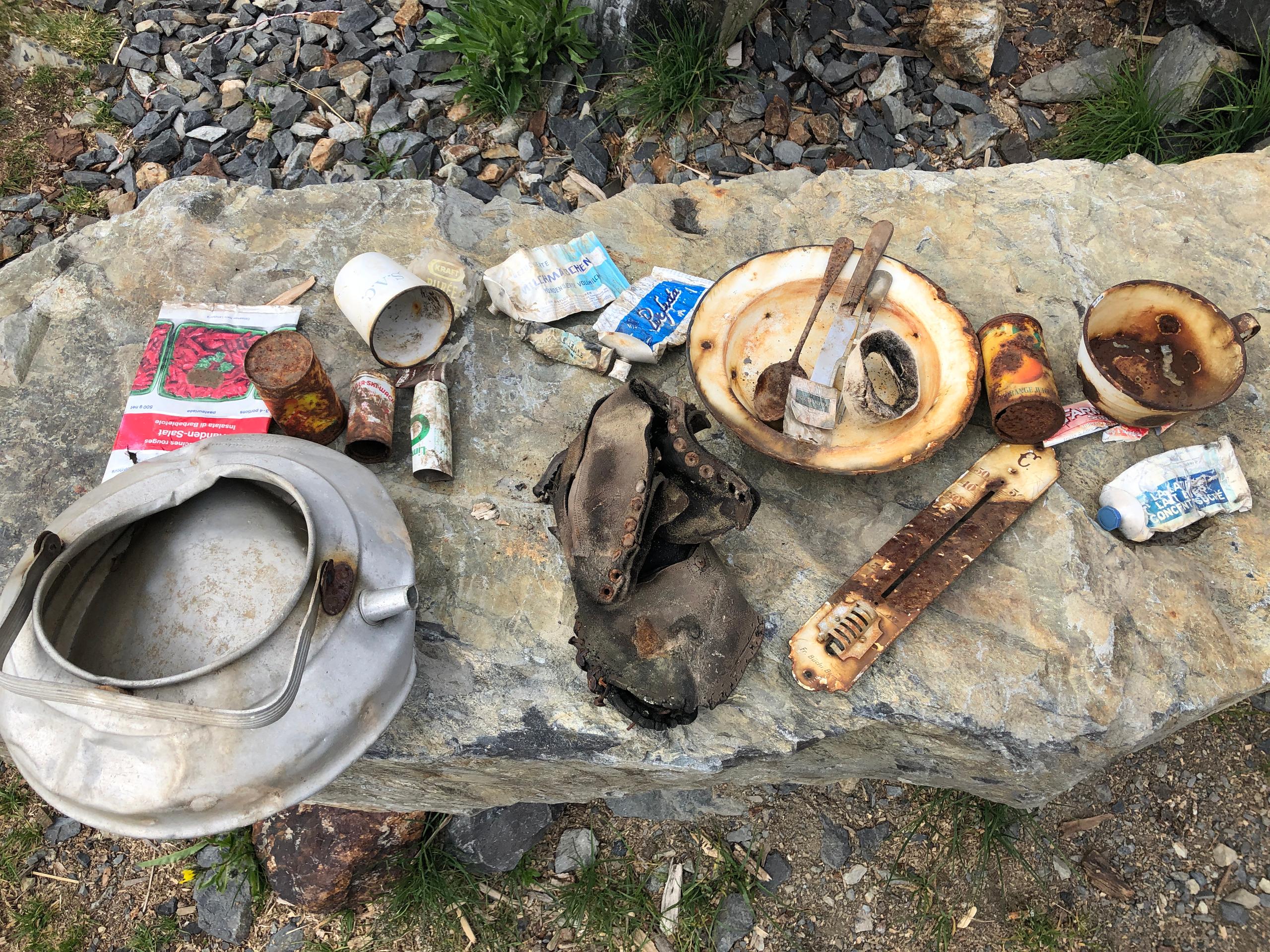
Pristine Swiss Alps? What a load of rubbish!
The trouble with rubbish at higher elevations is that what goes up, often doesn’t come down.
Volunteers are aiming to gather up ten tons of garbage left lying in the Alps by the end of this summer. That could be just the tip of the ‘mountain’.
Nowhere has the problem been more in the spotlight than on Everest where hundreds of climbers set out each spring to get to the top of the world’s highest peak. The discarded tents, ropes, food containers, and empty oxygen tanks (not to mention human faeces) became such a problem that a few years ago Nepal’s government decided to introduce a $4,000 deposit per expedition team, only refunded if the group returns with an amount of waste in kg that corresponds to the average amount each person produces during a climb.
No such fee is demanded of climbers and hikers in Switzerland, and theoretically piles of leftover garbage shouldn’t be an issue here. There is no need in the comparably low-lying Alps to haul up heavy gear, let alone oxygen tanks or provisions to survive for weeks at a high-altitude base camp.
Instead, we’ve got well-equipped mountain huts where hot meals are served and the beds – if narrow – are comfy in contrast to the thin mat and mummy sleeping bag of the Himalayan climber. And alpine stays are usually limited to a night or two, with food and drink flown in by helicopter. Flown out are crates of empty bottles and bags of assorted trash.
Still, my money is on the volunteers I mentioned at the top of this article to achieve their goal. They’ll surely find inspiration in the effort made by a group of young people who, in just one week in 2018, collected three tons of waste lying between and under the rocks around a single hut, the Konkordia, that sits above the Aletsch glacier.
The group filled sacks with old bottles, tubes, all kinds of plastic, clothes, even puppet heads and blocks of lego.

And at the start of this summer members of a local SAC affiliate, armed with picks and shovels, climbed up to the Chelenalp hut they manage in the central Swiss Alps. There they dug up layer after layer of trash, three metres deep, representing decades of disposal. Among the bottles and cereal bar wrappers were dead but still very toxic batteries from military torches.
Aware of the rubbish problem, the Swiss Alpine Club (SAC), which operates the Konkordia and refuge at Chelenalp as well as about 150 other mountain huts, began promoting a #cleanmountains campaign a couple of years ago.
The SAC is openly taking responsibility for these “past sins” when trash was burned or buried close to the huts. Indeed, it was not unusual for notices to be pinned to the walls of huts, directing visitors to the nearby cliff where they were instructed to throw over their used cans and other waste. Toxic substances from the improvised rubbish pits have for decades been leaching into the groundwater and mountain streams. The consequences have been felt downstream.
A 2019 study measuring plastic pollution found that the concentration of microplastic in Lake Geneva is as high as in the world’s oceans. The NGO that commissioned the report, Oceaneye, said that much of the pollution is fed into the lake from the Rhone River, which itself is fed by countless mountain tributaries.
Currently, the most indepth study of microplastic concentrations in alpine lakes and rivers was conducted in the Upper Engadine this summer near the resort of St Moritz. My colleague Simon Bradley visited the team of university researchers. Watch out for his story which we’ll publish in the coming days.
In the past few years, SAC affiliates have carried out about 30 “clean ups”. This means that the SAC still has a long way to go to address the issue at all huts, even if every effort may not have been reported to the SAC head office, as spokeswoman Fabienne Bögli told me.
There is hope that the ban on single-use plastic that came into force in the European Union last week will result in fewer disposable items going up the mountain. The clear message it sends should lead to an eventual reduction of trash in the Swiss Alps too even if Switzerland – a non-EU country – hasn’t followed suit with a ban of its own, as my colleague Susan Misicka explains in this article.
So if you are heading into the Alps this summer, do enjoy the views of the peaks above and in the distance, but don’t forget to take a good look between the rocks at your feet. You’ll be doing your bit for the environment if you tuck that energy bar wrapper or rusty tin can into your backpack for proper disposal later.
If you have a question about life in the Swiss Alps, do get in touch: dale.bechtel@swissinfo.ch

In compliance with the JTI standards
More: SWI swissinfo.ch certified by the Journalism Trust Initiative






























You can find an overview of ongoing debates with our journalists here . Please join us!
If you want to start a conversation about a topic raised in this article or want to report factual errors, email us at english@swissinfo.ch.